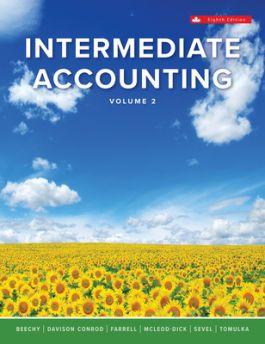Question
Hope Corporation had the following comparative current assets and current liabilities for the years ended December 31, 2019 and 2020: 2020 2019 Current assets Cash
Hope Corporation had the following comparative current assets and current liabilities for the years ended December 31, 2019 and 2020:
| 2020 | 2019 | |||
| Current assets | ||||
| Cash | $27,100 | $29,000 | ||
| Short-term investments | 15,000 | 26,200 | ||
| Accounts receivable | 63,000 | 80,000 | ||
| Inventory | 173,000 | 97,600 | ||
| Prepaid expenses | 6,400 | 14,200 | ||
| Total current assets | $284,500 | $247,000 | ||
| Total non-current assets | $435,000 | $386,000 | ||
| Current liabilities | ||||
| Accounts payable | $167,000 | $159,000 | ||
| Salaries payable | 13,000 | 25,700 | ||
| Income tax payable | 18,200 | 12,200 | ||
| Total current liabilities | $198,200 | $196,900 | ||
| Total non-current liabilities | $332,000 | $304,000 |
During 2020, credit sales and cost of goods sold were $462,000 and $240,800 respectively. The 2019 credit sales were $478,000 and cost of goods sold was $258,000. Net cash provided by operating activities was $135,800 and $149,800 respectively for 2020 and 2019. At December 31, 2018, current liabilities were $185,800, accounts receivable was $72,000 and inventory was $94,200. The allowance for doubtful accounts at the end of each of the three years was zero.
| Industry Averages: |
| Working capital $38,500 |
| Current ratio: 1.20: 1 |
| Quick ratio: 0.65:1 |
| Receivables average collection period: 30 days |
| Days to sell inventory: 120 days |
Using retrospective (horizontal) analysis, calculate the percentage of base-year amount for 2019 to 2020, assuming that 2019 is the base year. (Round answers to 1 decimal place, e.g. 15.2%.)
| 2020 | 2019 | |||
| Current assets | ||||
| Cash | % | % | ||
| Short-term investments | % | % | ||
| Accounts receivable | % | % | ||
| Inventory | % | % | ||
| Prepaid expenses | % | % | ||
| Current liabilities | ||||
| Accounts payable | % | % | ||
| Salaries payable | % | % | ||
| Income Tax Payable | % | % |
Calculate the following liquidity measures for 2019 and 2020: (Round quick ratio to 2 decimal places, e.g. 1.25. Round current ratio, accounts receivable turnover and inventory turnover to 1 decimal place, e.g. 15.2. Round receivables average collection period and days to sell inventory to 0 decimal places, e.g. 125. Use 365 days for calculation.)
| 2020 | 2019 | |||||||
| (1) | Working capital | $ | $ | |||||
| (2) | Current ratio | : 1 | : 1 | |||||
| (3) | Quick ratio | : 1 | : 1 | |||||
| (4a) | Accounts receivables turnover | times | times | |||||
| (4b) | Receivables average collection period | days | days | |||||
| (5a) | Inventory turnover | times | times | |||||
| (5b) | Days to sell inventory | days | days |
Calculate the net debt as a percentage of total capitalization solvency measure for 2019 and 2020. (Round answers to 1 decimal place, e.g. 15.2%.)
| 2020 | 2019 | |||
| Net debt as a percentage of total capitalization | % | % |
Step by Step Solution
There are 3 Steps involved in it
Step: 1

Get Instant Access to Expert-Tailored Solutions
See step-by-step solutions with expert insights and AI powered tools for academic success
Step: 2

Step: 3

Ace Your Homework with AI
Get the answers you need in no time with our AI-driven, step-by-step assistance
Get Started


